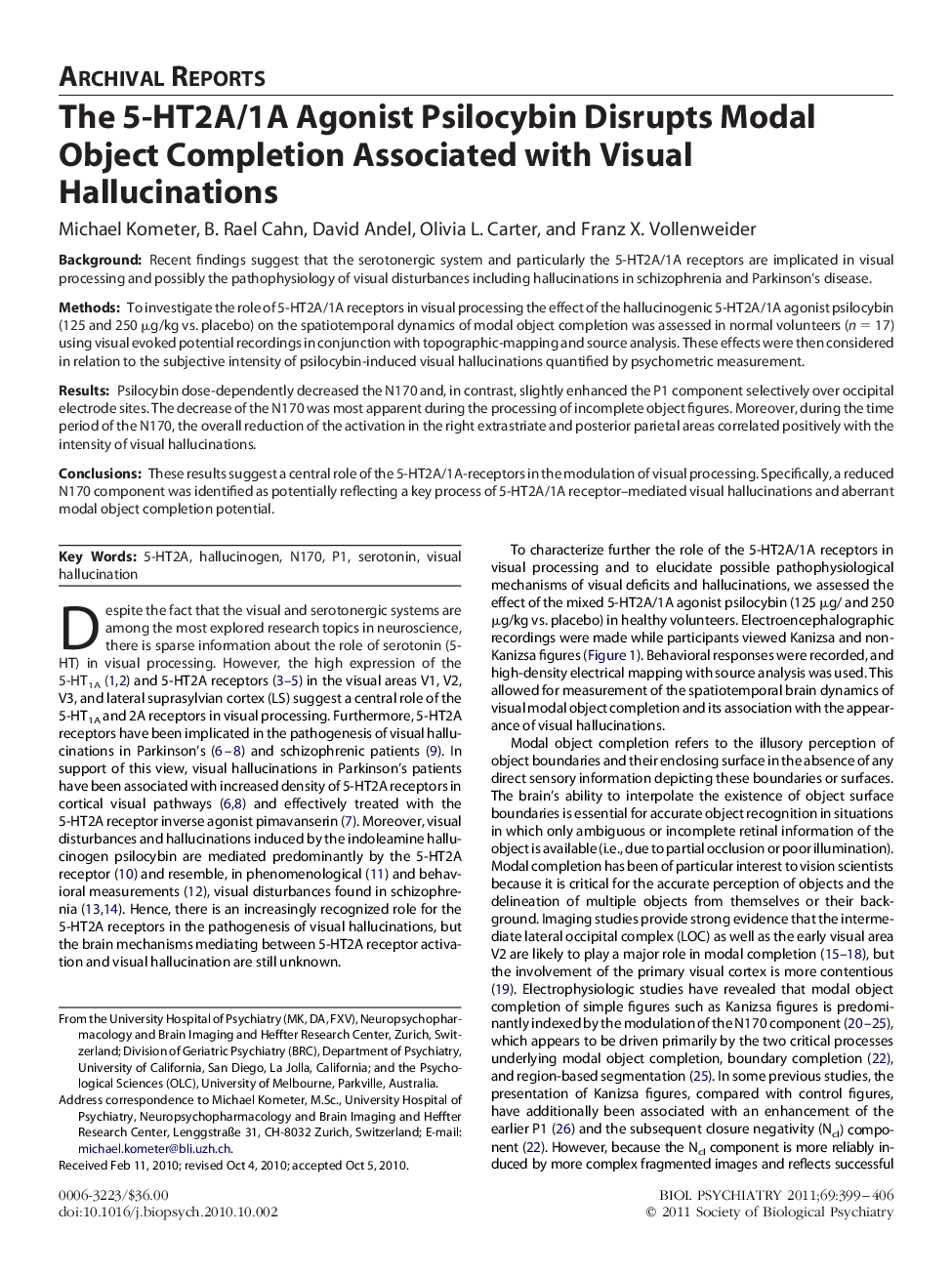| Article ID | Journal | Published Year | Pages | File Type |
|---|---|---|---|---|
| 4178398 | Biological Psychiatry | 2011 | 8 Pages |
BackgroundRecent findings suggest that the serotonergic system and particularly the 5-HT2A/1A receptors are implicated in visual processing and possibly the pathophysiology of visual disturbances including hallucinations in schizophrenia and Parkinson's disease.MethodsTo investigate the role of 5-HT2A/1A receptors in visual processing the effect of the hallucinogenic 5-HT2A/1A agonist psilocybin (125 and 250 μg/kg vs. placebo) on the spatiotemporal dynamics of modal object completion was assessed in normal volunteers (n = 17) using visual evoked potential recordings in conjunction with topographic-mapping and source analysis. These effects were then considered in relation to the subjective intensity of psilocybin-induced visual hallucinations quantified by psychometric measurement.ResultsPsilocybin dose-dependently decreased the N170 and, in contrast, slightly enhanced the P1 component selectively over occipital electrode sites. The decrease of the N170 was most apparent during the processing of incomplete object figures. Moreover, during the time period of the N170, the overall reduction of the activation in the right extrastriate and posterior parietal areas correlated positively with the intensity of visual hallucinations.ConclusionsThese results suggest a central role of the 5-HT2A/1A-receptors in the modulation of visual processing. Specifically, a reduced N170 component was identified as potentially reflecting a key process of 5-HT2A/1A receptor–mediated visual hallucinations and aberrant modal object completion potential.
